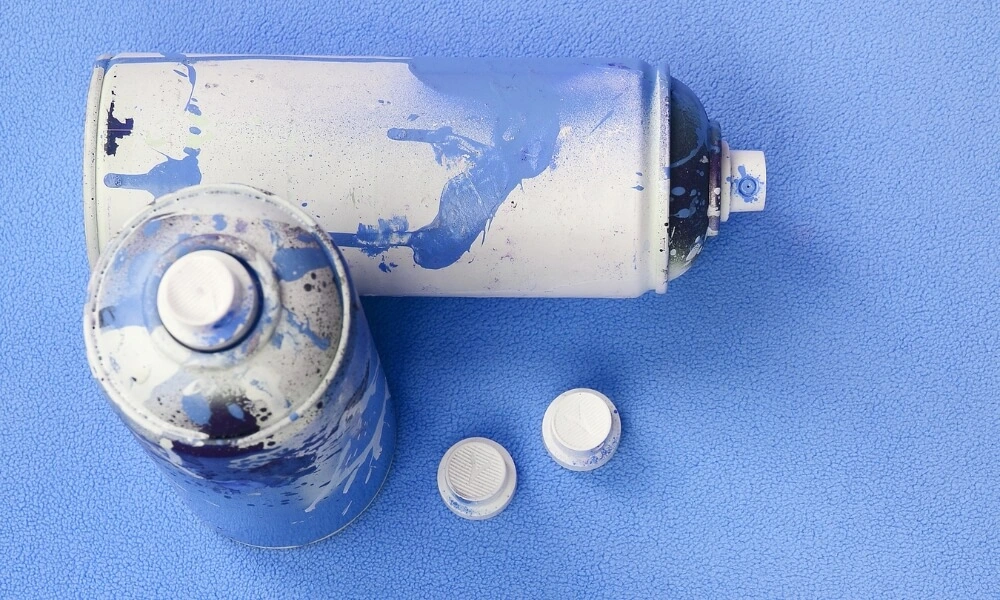In our modern world, aerosol cans—from deodorants to spray paints—have become indispensable commodities in daily life. However, their convenience comes with a responsibility. These pressurized containers, brimming with chemicals, present unique disposal challenges, as incorrect handling can lead to environmental, health, and safety hazards. As conscious consumers, understanding how to correctly dispose of these items is pivotal.
In this blog, we’ll demystify safely disposing of spray paint and other aerosol cans, ensuring we minimize harm while maximizing our sustainable practices. Read on to learn how to handle these everyday items eco-friendly and responsibly.
Spray Paint and Aerosol Cans
Spray paint and other aerosol cans use a pressurized system to release and atomize their contents as a mist or spray. Here’s a deeper look into both:
Spray Paint
This type of paint comes in a sealed pressurized container and is released in an aerosol spray when depressing a valve button. Spray paint is popular for its smooth application, ability to cover large areas quickly, and ease of use on various surfaces, including metal, wood, and plastic.
Aerosol Cans
An aerosol can is a general term for any container that uses a propellant to force its contents out in a spray, mist, or foam. The technology behind aerosol cans is utilized in various products, not just spray paint. Examples include:
- Deodorants and Antiperspirants: These often come in aerosol forms, providing a misty application.
- Hair Sprays: Used to hold hairstyles in place.
- Cooking Sprays: These provide an even coat of oil or non-stick substance on cookware.
- Insect Repellents and Bug Sprays: Used to deter insects.
- Cleaning Products: Some household cleaners use aerosol technology for even application.
- Air Fresheners: Designed to release fragrance in a fine mist.
- Whipped Cream: Some whipped creams are dispensed using aerosol technology.
Aerosol cans work by having the product and a propellant inside. When the valve on top of the can is pressed, the propellant forces the product out of the can, atomizing it into a fine spray. The propellant can be a liquefied gas or a compressed gas, and it’s vital to note that while the propellant itself is often flammable, not all aerosol products are.
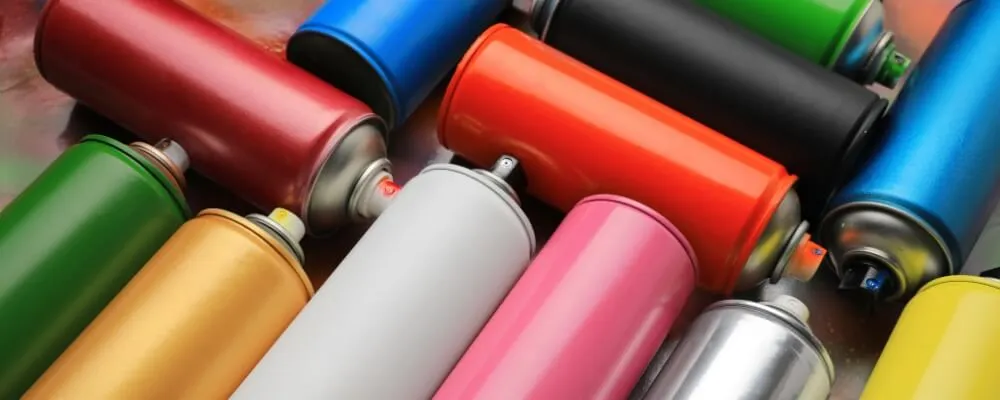
Importance Of Disposing Spray Paint and Other Aerosol Cans
Disposing spray paint and other aerosol cans properly is paramount for many reasons that touch on environmental and public health and safety. Here’s a comprehensive exploration of its significance:
- Environmental Protection: Aerosol cans often contain chemicals that can harm the environment. Improper disposal can lead to these chemicals leaching into the soil and contaminating groundwater. Over time, this can degrade the quality of water sources, affecting both human consumption and natural ecosystems.
- Air Quality: Releasing the contents of aerosol cans directly into the atmosphere can contribute to air pollution. The volatile organic compounds (VOCs) in many sprays contribute to forming ground-level ozone, a primary component in smog. Breathing smog can harm health by exacerbating respiratory problems and other health issues.
- Safety Concerns: Aerosol cans are pressurized, and if they are punctured or exposed to high temperatures, they can explode. This poses a direct safety risk. Incidents involving exploding cans can result in personal injury or even property damage.
- Conservation of Resources: Aerosol cans are typically made of metals that can be recycled, such as aluminum or steel. Proper disposal ensures that these materials can be reclaimed and reused, reducing the need to mine and process new raw materials. This conservation of resources helps reduce the overall environmental footprint of producing new cans.
- Prevention of Wildlife Harm: When not disposed of correctly, aerosol cans can end up in habitats where wildlife might encounter them. Animals can mistake them for food or become entangled. Also, harmful chemicals can affect aquatic life if they enter water systems.
- Public Health: Many aerosol products contain chemicals that can be harmful if ingested, inhaled, or come into contact with skin. If these cans are not disposed of properly and end up in places where people can accidentally come into contact with them, they can pose serious health risks.
- Ethical Responsibility: It’s our ethical duty to ensure that our actions today do not harm future generations. Proper disposal practices ensure we are not leaving behind a legacy of pollution and environmental degradation.
- Legal Implications: In many jurisdictions, improper disposal of hazardous waste, including aerosol cans, can result in hefty fines or legal action. Ensuring proper disposal is an environmental and ethical concern and a legal one.
Disposing spray paint and other aerosol cans is crucial to responsible environmental stewardship, public safety, and health. It is essential in minimizing human environmental impact and ensuring a sustainable future.
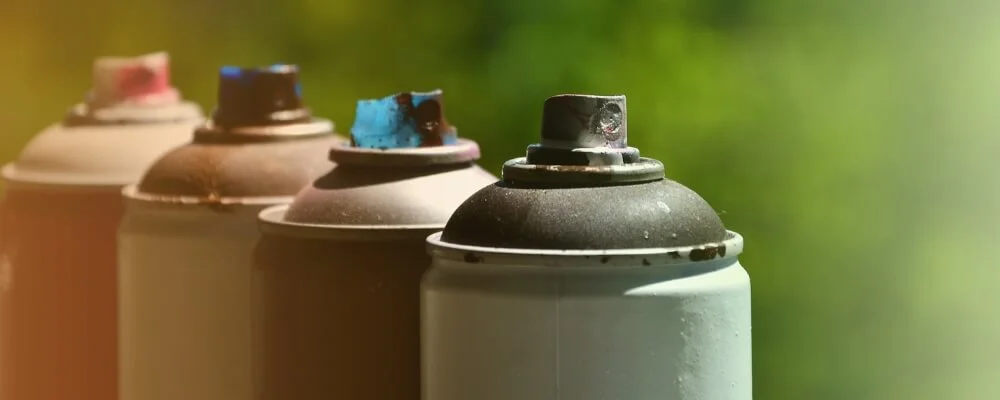
How to Dispose of Spray Paint and Other Aerosol Cans
Proper disposal of spray paint and other aerosol cans is essential to prevent environmental pollution and potential health risks. Here are 10 ways to safely handle and dispose of these items:
1. Follow Local Regulations
Different regions and municipalities have specific regulations about hazardous waste disposal, including aerosol cans. It’s crucial to familiarize oneself with these local guidelines to ensure the safety of the environment and the community. Failing to comply can lead to environmental harm and result in fines or legal repercussions. Contacting the local waste disposal facility or city office can provide insight into these rules and any particular steps or procedures you should follow.
2. Empty Cans Completely
Before considering disposal, ensure that the aerosol can is empty. To do this, spray paint or other substances on scrap paper or cardboard. Continue until no more product emerges from the can. In many jurisdictions, an entirely depleted can is considered non-hazardous, making it easier and safer to dispose of. Moreover, this reduces the potential for residual chemicals to leak into the environment.
3. Do Not Puncture or Incinerate
Aerosol cans are pressurized containers, and puncturing or incinerating them can be extremely dangerous. Puncturing can lead to rapid gas expansion, potentially causing the can to burst or explode. Incinerating, on the other hand, can cause violent explosions and release harmful fumes. These actions are dangerous to an individual and pose a risk to the environment and surrounding individuals. Thus, these methods should be avoided without specialized equipment and expertise.
4. Recycling
With growing concerns about environmental sustainability, many recycling centers have expanded their accepted items to include empty aerosol cans. Once the can is entirely depleted and there’s no residual pressure, it may qualify for recycling alongside other metal items. However, verifying this with your local recycling center is crucial. Not all centers have the equipment or protocols to handle aerosol cans. Recycling these cans, when possible, can significantly reduce the environmental impact and minimize landfill waste.
5. Hazardous Waste Collection
Recognizing the potential environmental and health risks associated with improper disposal of certain items, many municipalities periodically organize hazardous waste collection days. Residents can safely dispose of potentially harmful items, such as paints, batteries, and aerosol cans, on these days. These events are managed by professionals who ensure the materials are handled and processed safely. Participating in these collection days is a responsible way to ensure that hazardous waste is managed correctly and doesn’t end up causing environmental contamination or health issues.
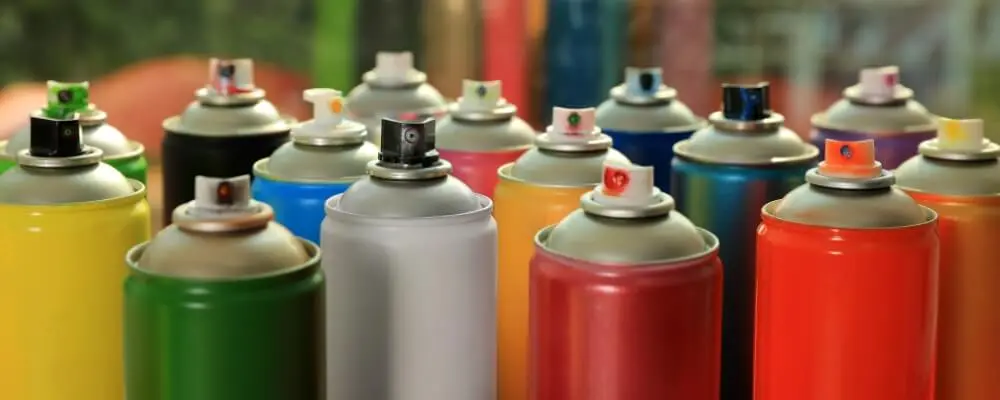
6. Reuse or Donate
Even if partially used, Aerosol products like spray paint can still serve a purpose. Instead of throwing them away, consider donating them. Many local schools, community centers, and art programs are often on the lookout for art supplies.
Donating usable products can support creativity and learning in the community. Moreover, by reusing or donating, we extend the life of these items, thereby reducing the environmental burden of producing new cans and the associated waste of disposing of the old ones.
7. Never Pour Down the Drain
It might be tempting to simply drain the contents of a nearly-empty aerosol can, but this can be harmful. Draining such chemicals into sinks, toilets, or outdoor drains might introduce harmful chemicals into water systems.
These chemicals can damage plumbing, pollute local water sources, harm aquatic life, and even contaminate drinking water. It’s crucial to recognize that what goes down the drain doesn’t just disappear; it enters our ecosystems and can have long-lasting repercussions.
8. Store Properly
Aerosol cans are pressurized containers containing potentially volatile chemicals. As such, their storage requires consideration. If you are unsure about immediate disposal methods, storing the can in a location that minimizes risks is wise.
A cool, dry place is ideal, away from direct sunlight and heat sources. Exposing aerosol cans to high temperatures or direct sun can increase internal pressure, potentially leading to leaks or explosions. Proper storage ensures the product’s and its user’s safety, allowing time to determine an appropriate disposal method.
9. Educate and Raise Awareness
Knowledge is one of the most potent tools in promoting sustainable and safe practices. By sharing information about proper disposal methods, you can play a role in ensuring that more aerosol cans are disposed of safely in your community. Talk to friends, family, and neighbors about improper disposal’s potential environmental and health risks. Sharing dates and locations of hazardous waste collection events can encourage participation, leading to broader community engagement in responsible disposal.
10. Alternative Products
As environmental consciousness grows, so does the availability of eco-friendlier alternatives to traditional products. Consider seeking alternatives if you’re concerned about aerosol cans’ environmental impact. Many products today are designed to be just as effective as their aerosol counterparts without the associated environmental concerns.
For instance, roll-on deodorants, pump-spray bottles, or even solid versions of products can replace aerosol variants. Switching to these alternatives not only reduces the environmental footprint but also often results in less waste and potential harm in the long run.
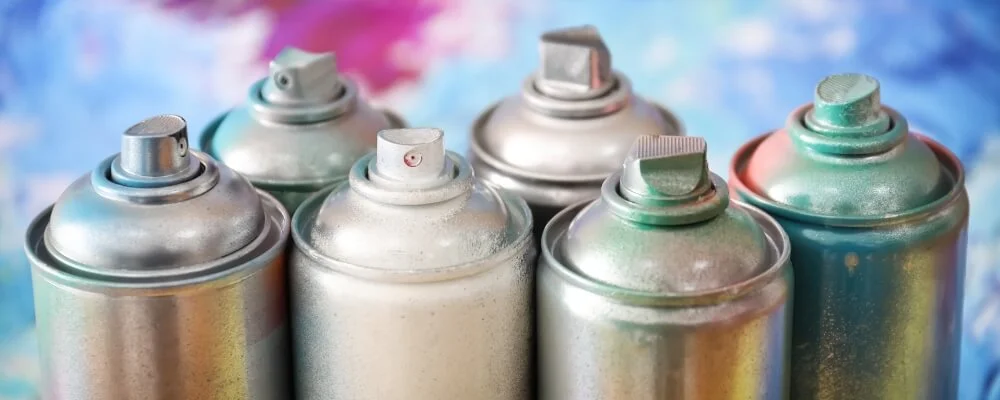
Hazards Associated With Disposing Spray Paint and Other Aerosol Cans
Improper disposal of spray paint and other aerosol cans presents a range of potential hazards. These risks span environmental, health, and safety concerns:
- Pressurized Explosion: Aerosol cans are under pressure. If punctured, exposed to high temperatures, or crushed, they can explode, causing potential injury to anyone nearby and possibly leading to fires.
- Air Pollution: When released into the atmosphere, the volatile organic compounds (VOCs) in many aerosol sprays contribute to air pollution. These VOCs play a role in creating ground-level ozone, a primary component of smog. This can exacerbate respiratory conditions like asthma and harm sensitive ecosystems.
- Ground and Water Contamination: Disposing aerosol cans in landfills without proper treatment can lead to chemicals seeping into the ground. Over time, these chemicals can contaminate groundwater sources, impacting drinking water and aquatic ecosystems.
- Respiratory and Health Hazards: Direct exposure to the contents of aerosol cans, especially in a non-ventilated space, can be harmful. Inhalation can cause dizziness, headache, respiratory irritation, and more critical health complications in severe cases.
- Physical Harm to Wildlife: Improperly disposed of cans in natural environments can become physical hazards to wildlife. Animals can ingest or become trapped in the cans, leading to injury or death.
- Chemical Exposure to Wildlife: Chemicals from aerosol cans can enter water systems or soil. These chemicals can severely affect aquatic life, leading to disruptions in the food chain and biodiversity loss.
- Fire Hazard: Many contents of aerosol cans, especially spray paints, are flammable. If they come into contact with open flames or sparks, they can ignite, posing a fire hazard.
- Waste of Resources: Aerosol cans are primarily made from metals like steel or aluminum, which are recyclable. Not recycling these materials wastes valuable resources and an increased need for mining and processing, which have environmental impacts.
- Legal Ramifications: Many regions have strict regulations about hazardous waste disposal, including aerosol cans. Not adhering to these regulations can result in legal consequences, including fines.
- Chemical Burns or Reactions: Some aerosol products contain chemicals that can cause burns or adverse skin reactions upon contact. If not disposed of properly, there’s a risk of these chemicals coming into contact with people inadvertently.
Given these hazards, it’s evident that the correct disposal and handling of spray paint and aerosol cans are imperative for the safety and well-being of the environment and the public.
Conclusion
As we navigate the intricate landscape of environmental responsibility, the seemingly small actions, like properly disposing of spray paint and aerosol cans, collectively make a significant impact. Though convenient in our day-to-day activities, these ubiquitous items come with challenges when it’s time to part with them.
By adhering to safe disposal practices, we not only ensure our safety and the safety of those around us, but we also take a proactive step toward preserving our environment for future generations. Remember, everyone can correctly be disposed of is a stride towards a cleaner, healthier planet. Let’s embrace this knowledge, share it within our communities, and consistently act in the best interest of our shared home, Earth.

